This content is archived from the Feline Nutrition Foundation
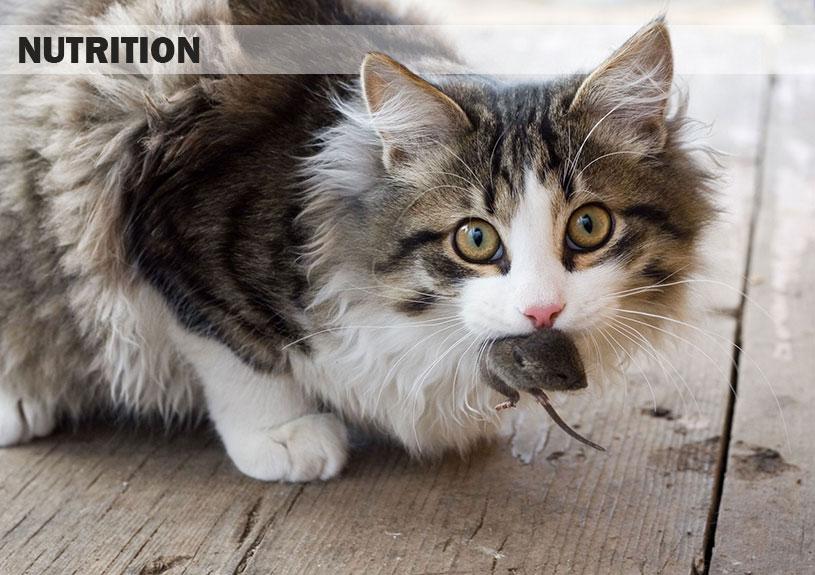 What to feed your cat can be one of the most important decisions you make in the health and well-being of your feline family member. Cats are obligate carnivores, meaning they are especially adapted to a diet consisting of the flesh of other creatures. They are uniquely equipped to eat a diet of small prey and they evolved to eat this diet raw. There are no vegan cats.
What to feed your cat can be one of the most important decisions you make in the health and well-being of your feline family member. Cats are obligate carnivores, meaning they are especially adapted to a diet consisting of the flesh of other creatures. They are uniquely equipped to eat a diet of small prey and they evolved to eat this diet raw. There are no vegan cats.
Cats have no dietary requirement for carbohydrates. Period. They evolved to get almost all of their fluid intake from the food they eat. A mouse, a typical prey food, is about 70% water. Dry kibble food contains far too much carbohydrates and far too little moisture to be an appropriate food for cats.
There are many ways to feed bio-appropriate raw food for cats. You can make your own ground raw cat food at home or buy commercially ground meat/bone/organ mixes especially made for pets. You can buy commercially-prepared complete meals that are available frozen or dehydrated. You can feed whole meat cuts or small, whole prey foods. Many people feed a combination of some or all of these.
If you and your cats are new to raw cat food, transitioning is the next step. Whether this is fast or slow depends on your cat's particular situation. Many cats take to a raw meat diet right away. Making the change is worth it, the benefits are tremendous for your cat and for you.
Feline Nutrition's Easy Homemade Cat Food Recipe
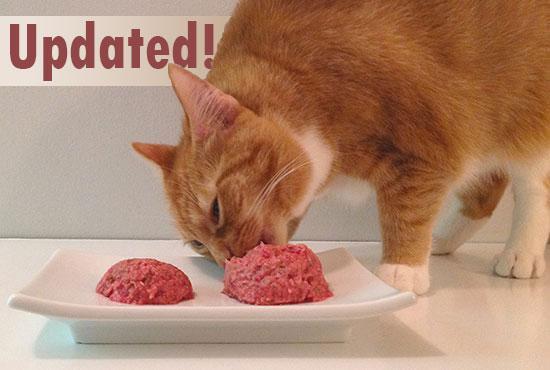
Making homemade cat food isn't hard to do at all, anyone can! Once you make your own, you'll realize that raw food for cats isn't complicated. It helps to know how ground raw meals are made, because commercially-made frozen foods are created in much the same way, just on a larger scale. Taking the mystery out of what you feed your cats is important. While they benefit from the nutritionally better food, the benefit to you in terms of peace of mind shouldn't be overlooked. Continued
 Beginner's Luck: Where Do I Start?
Beginner's Luck: Where Do I Start? 
Congratulations on taking the first step toward feeding your cat a healthier diet. Just making the decision to change to raw cat food can be the hardest part. For many people, realizing your obligate carnivore should be fed a diet closer to what it evolved to eat is a complete shift in thinking about cat nutrition. Frankly, it's empowering to take control of what goes into your cat. It's also a bit of a relief. No more mystery ingredients. No more worrying about what "by-products" really means. You now get to skip an entire aisle at the grocery store, well, except maybe to get some more kitty litter. Continued
 How to Transition to a Raw Cat Food Diet
How to Transition to a Raw Cat Food Diet
Transitioning to raw food for cats is something that the majority of us will have to do until the time comes when people grab a kitten from its mother's teat and start feeding raw cat food from the beginning! But in the meantime, it's a major issue in cat nutrition. This step-by-step approach, and patience, will work for nearly every cat. Kittens need no transition; they take to it like ducks to water. They eat the same food as adult cats, just more of it and more often. Continued
 Just What is a Raw Cat Food Diet, Anyway?
Just What is a Raw Cat Food Diet, Anyway?
All cats, small or large, are true carnivores, obligate carnivores. This means they must eat meat to survive. There are no vegan cats. Because they evolved to fill this top-predator niche, their bodies are specifically geared to process a prey-based diet. This is as true for a tiger as it is for the cat on your lap. It is a way to feed cats a more natural diet. By natural we mean bio-appropriate. A diet that fits their true nutritional requirements. The benefits to your cat are enormous. And it isn't hard at all. Continued
 Easy Raw Cat Food for the Busy Person
Easy Raw Cat Food for the Busy Person
There are now many easy raw cat food choices for the person on-the-go. In stores and on the internet, you can purchase frozen complete meals, frozen ground meat/bone/organ mixes and pre-mixed supplements that you just add to raw meat. There are a few national brands, and many smaller, regionally-available products that make it easy to feed natural raw food for cats. It's as simple as thaw and serve! We discuss some specific products here, but there are many others, with more being added as demand for easy-to-feed raw food increases. Continued
 Raw Cat Food Essentials and Fun Stuff, Too!
Raw Cat Food Essentials and Fun Stuff, Too! 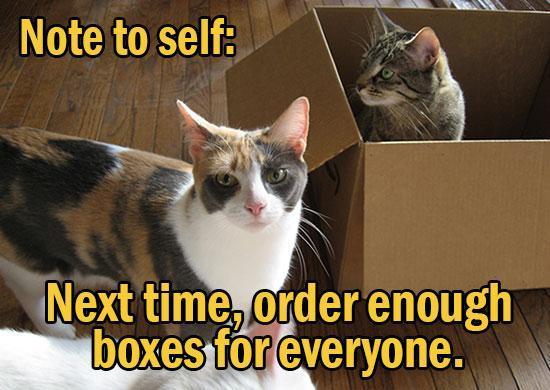
The Feline Nutrition Foundation is dedicated to educating people about the benefits of feeding their cats the right kind of diet. We want science-backed information to be freely available to everyone. That's a core part of our mission. We emphasize the freely part. Membership is free, all the information we offer is free and we don't have ads cluttering up the site. Everyone associated with our education and advocacy work is a volunteer. We are passionate about helping cats. But, passion doesn't pay the bills. Continued
 Your Cat's Nutritional Needs: The Basics
Your Cat's Nutritional Needs: The Basics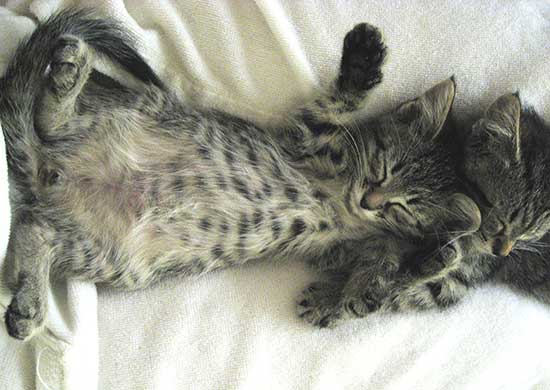
This article discusses the basic nutritional needs of your cat. Many nutrients have been studied individually in a clinical setting – in fact, they're examined more individually than in the food they came from. This is unfortunate because it's important to remember that the essential building blocks of health aren't isolated in nature. Whole foods contain a complex blend of synergistic compounds that work together to support optimal well-being. While that may sound complicated, it really isn't – if you simply use species-appropriate real food as the foundation for health. Continued
 The Benefits of Raw Food for Cats
The Benefits of Raw Food for Cats
Cats are predators. They evolved eating a prey-based diet, and more importantly, eating that food raw. Cooking degrades nutrients in meat, causing the loss of vitamins, minerals and amino acids.¹ Meat used in highly-processed pet food is cooked at high temperatures. The nutrients lost must then be added back in. This supplementation is not exact. There are nutrient losses that aren't always replaced. Cats in the wild often eat the entire prey animal if it is small, and will eat nearly everything except the intestines of a larger prey animal. Continued
There's No Such Thing as a Vegan Cat 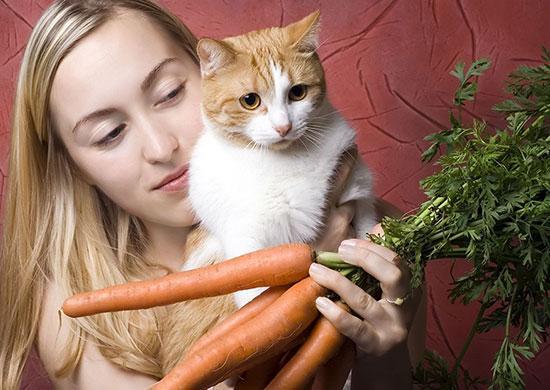
The reasons people give for becoming vegetarian or vegan are diverse. Primarily, it's the desire to become healthier and to prevent or stop cruelty to animals. Those are admirable reasons, but extending that desire to your cat, an obligate carnivore, is a recipe for disaster.¹ These cat owners don't realize that, in trying to convert their feline companion into a "vegan carnivore," they themselves are inflicting cruelty on their cats. I call this passive cruelty, because in doing so they disrespect and go against the true nature of cats. Continued
 Eight Effective Bribes for the Kibble Addict
Eight Effective Bribes for the Kibble Addict 
Cats are peculiar and wonderful creatures, but if they are raised with dry food only they may not recognize other forms of food as being food. Their eating habits get set early in life and they can be a challenge to change. But, it is doable. Your cat will benefit enormously from ditching the dry food, so it is worth making the change. Due to heavy commercialization and convenience, dry cat food is abundant. People are very used to feeding kibble foods. It's so easy! Dry food manufacturers are also adept at making these inappropriate foods enticing to cats, primarily by coating the food with digests that smell good to kitty. Continued
Don't Let Your Senior Cat Become a Skinny Old Kitty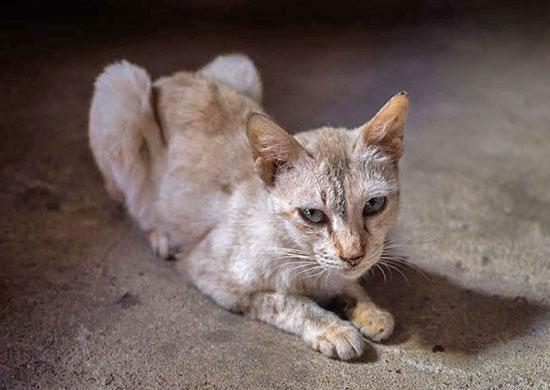
I've received a number of inquiries both from veterinarians and cat owners asking about the daily protein requirements for cats. How about protein requirements for clinically normal geriatric or senior cats with a nonthyroidal illness? These are excellent questions, given the fact that all cats will need higher amounts of protein as they age to prevent a loss in lean body mass and associated muscle wasting. The dogma that all older cats be fed reduced energy "senior" diets must be questioned based on what is now known about the increasing energy requirements and nutritional needs of older cats.¹⁻² Continued
The Skinny on Senior Cats: Metabolism Explained
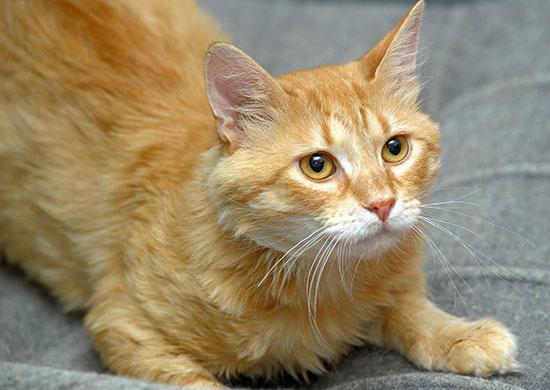
In this article, my mission is to review energy and protein metabolism in cats. I will attempt to explain why, unfortunately, increasing the amount of fat or carbohydrate fed to an older or hyperthyroid cat generally cannot compensate for a diet deficient in an optimal protein content. As I discussed in in my previous article, energy requirements sharply and progressively increase in older cats starting at ten to twelve years of age. If daily caloric intake is not increased, progressive weight loss will result, due in large part to the loss of lean body mass, i.e., muscle mass, a phenomenon referred to as sarcopenia of aging. Continued
Slimming Your Cat: What Works, What Doesn't
As in humans, obesity is a major problem in cats in this country. Unfortunately, the feline obesity epidemic appears to be getting worse, rather than better.¹ ² Many veterinarians and cat owners who have tried traditional feline weight loss diets, generally high fiber/low fat, find this approach frustrating, as it usually fails to achieve significant loss of weight. Another approach in treating and preventing feline overweight and obesity revolves around our understanding of basic feline nutritional needs and their feeding behavior. Continued
High Pressure Processing: The Future of Raw Cat Food?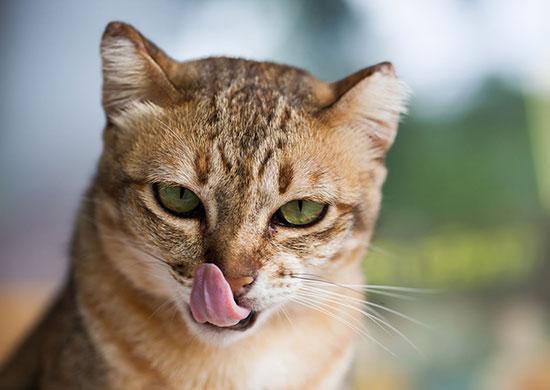
The FDA has long had a problem with raw pet foods, citing them as unsafe due to the potential for bacterial contamination. As a result of FDA attempts to interfere with the raw pet food industry, many manufacturers have begun using HPP or High Pressure Processing to sterilize their foods without cooking them, to the benefit of proper cat nutrition.¹ HPP is exactly what it sounds like. It is a process by which a food is subjected to high pressure, typically between 100 MPa up to 1,000 MPa for a certain period of time in order to kill bacteria and hopefully not damage nutrients much, if at all.² Continued
 No Bull, Taurine Is a Must for Kitty
No Bull, Taurine Is a Must for Kitty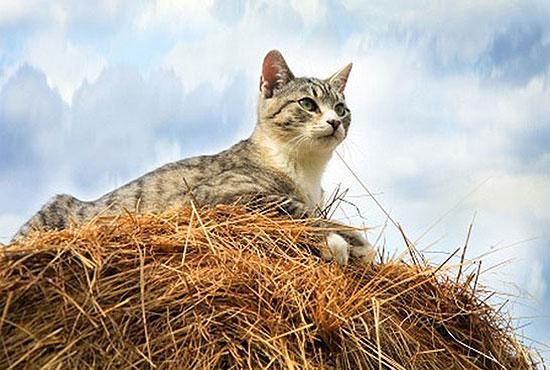
I am sure that you have all heard about the importance of taurine for cats. It is a naturally-occurring amino acid mostly found in muscle meat and organs like heart, kidney and liver and in seafood. In muscles, it gets more concentrated the harder the muscle works. Dark meat has more than light meat because it comes from parts of the body that work harder, legs as opposed to breast. Heart is another great example. Although it is termed an organ, it is really the hardest working muscle in the body and has one of the highest concentrations of taurine. Continued
Adding Taurine to a Raw Cat Food Diet
How much taurine should there be in frozen cat food meals? The brand I have says each patty contains 0.06%. Another says their chicken variety has 0.064% and the rabbit only 0.04%. Both companies claim to be providing complete and balanced diets in their formulas. It's so hard to know. I would really rather avoid adding supplements if I can help it.
There is no "precise" feline requirement for taurine, as many factors influence requirement levels. Continued
Homemade Cat Food, a Balancing Act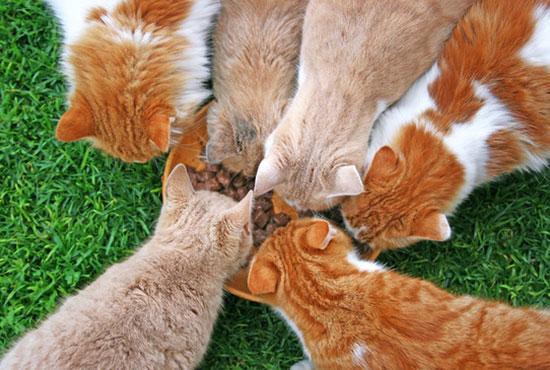
I am confused about supplements. I make homemade cat food and I noticed that the recipe I use does not call for some of the vitamins, such as iron, zinc, and folic acid that are included in some prepared premixes. Is this a problem? How can I be sure my recipe won't be vitamin deficient?
If you have ever been interested in nutritional science, I am sure you have come across the term "balanced diet." But what does it actually mean? Continued
Thiamine in Raw Food for Cats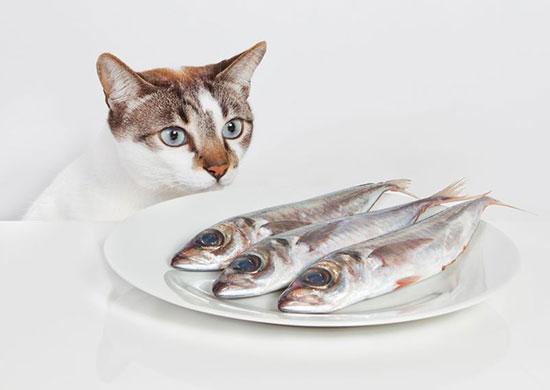
There have been recent recalls of thiamine-deficient canned cat food. Is a raw cat food diet safe from being deficient since it's not cooked?
In the past five years, there have been many recalls of commercial pet foods for various reasons. Five of these recalls have been related to the diets being deficient in thiamine, also known as vitamin B1. At least three of these recalls involved canned food.¹ None of these has been a raw commercial diet. Thiamine is a water-soluble B vitamin important for helping the body to utilize carbohydrates as energy through a process called the TCA cycle. Continued
Calcium Supplements in Homemade Cat Food 
Many of you already know that calcium is without a doubt one of the most important nutrients in a cat's diet. It forms healthy bones and teeth, helps in blood clotting, muscle function, nerve transmission and membrane permeability.¹ While some raw cat food diets such as whole prey, frankenprey or ground meat with bone generally don't require any supplementation, it's very important to add calcium supplements to all boneless raw meals. Feeding meat without bones or another source of calcium can be disastrous for cat nutrition. Continued
Don't Let Calcium/Phosphorous Ratios Scare You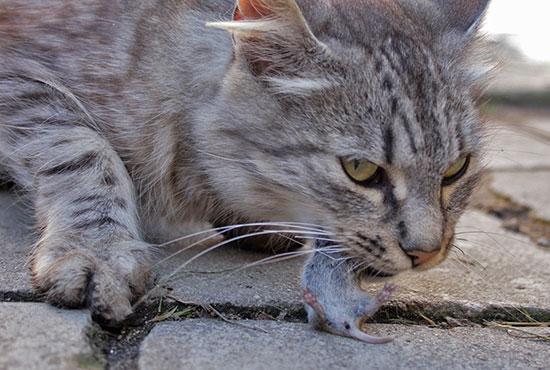
It is widely known that cats have a dietary need for both calcium and phosphorous. Calcium is required by the body, not only for bones, but also for muscle control and ion balance. Phosphorous is important in the formation of bones and teeth, and also plays vital roles in cell membranes and energy processes.¹ Phosphorus is a structural part of cells; this is why meat tissue has high levels of it. Phosphorus is attracted to calcium, forming calcium phosphate, which is what gives bones and teeth their strength. Continued
Vitamin E: Liquid vs. Powder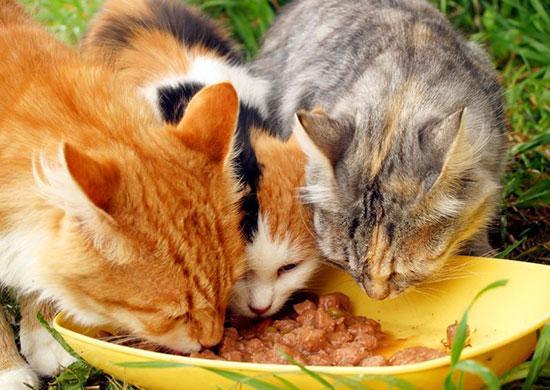
I feed my kitties ground raw cat food and add supplements. From what I have researched, liquid vitamin E is more easily assimilated into the body than the dry form. I was wondering why you suggest it in dry form in"Feline Nutrition's Easy Homemade Cat Food Recipe?"
First, some background. While the term vitamin E sounds pretty straightforward, it is actually a quite complicated and often confusing subject. First of all, it is important to realize that it is not one single substance, but a group of fat-soluble compounds known as the tocopherols. Continued
Arginine: Essential and Abundant for Cat Nutrition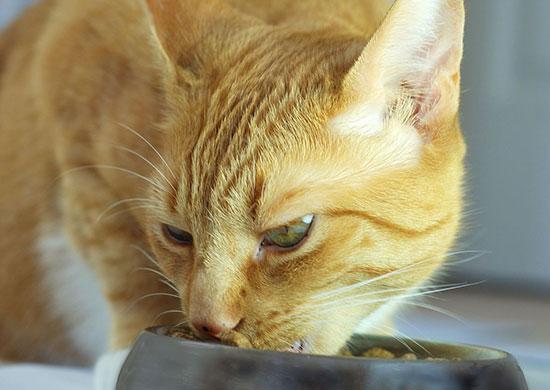
I read that the amino acid arginine is as important to cats as taurine, but I have never heard of it. Is it true that a cat can get really sick from eating just one meal that has no arginine in it? If I feed raw cat food, is this an amino acid I should worry about or supplement?
Amino acids are the building blocks that make up proteins. There are 20 different amino acids that commonly make up proteins, 11 of which are essential for cats.¹ An amino acid is considered essential if the animal either cannot make it, or make enough of it on its own, and therefore must obtain it directly from food sources. Continued
Lysine and Raw Cat Food Diets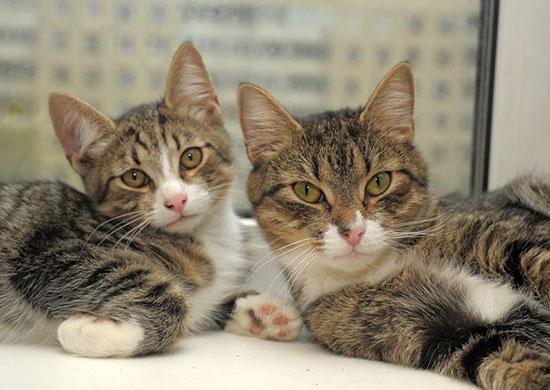
What is lysine? I have a friend who gives it to her cat as a treatment for herpes, but should it be supplemented in every cat's diet?
Lysine is an essential amino acid for cats. This means that the cat's body cannot synthesize or make this amino acid; it must be consumed in the diet. It is present in all meats, but fish contain higher amounts than other types of meat. For many years in human medicine, lysine has been used to help suppress herpes flare-ups as several studies exist to support this.¹ Continued
Care to Compare? Wild vs. Domesticated Prey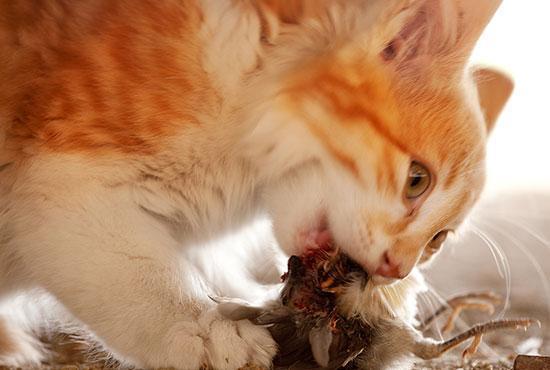
As obligate carnivores, cats evolved eating wild prey animals. Now we feed them mostly domesticated and farmed meats. The differences between domesticated food animals and prey animals are especially important for those of us trying to mimic the diet that cats evolved eating. Even if one can feed the entire domesticated animal, including the nutrient-dense blood, plasma, tongue, pituitary, adrenals, prostate, brains, eyes and testes, the nutrient content would not match that of wild prey. Continued
 Spooked By Salmonella: Raw Cat Food!
Spooked By Salmonella: Raw Cat Food!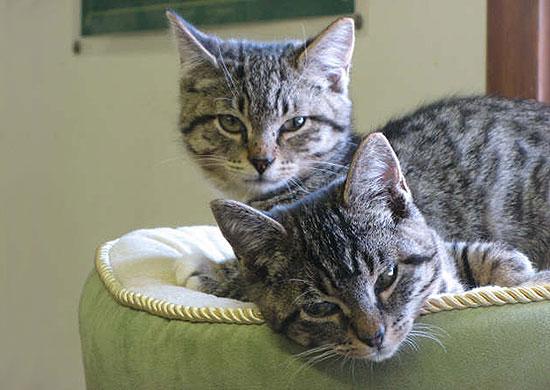
You may have concerns when considering a raw food for your cat. What about bones, parasites and proper nutrients? Most especially, what about pathogens such as salmonella? We have all been warned our entire lives about cooking meat thoroughly. The idea of feeding uncooked meat to our cats can seem scary at first. Isn't feeding a raw meat diet dangerous? Not at all. People from all over the world are feeding their pets raw meat diets. The risk from pathogens and parasites is minimal if you follow safe handling procedures and are careful about sourcing the products you feed your cats. Continued
 Tips for Transitioning Your Finicky Kitties
Tips for Transitioning Your Finicky Kitties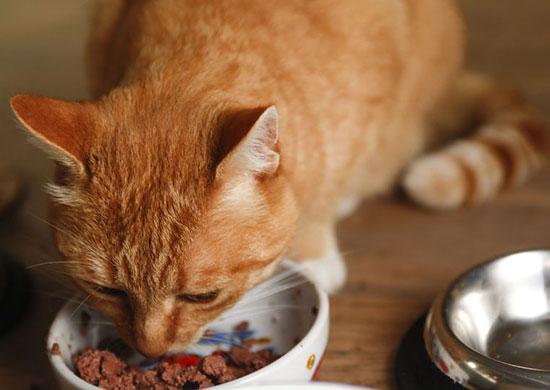
I have two indoor six-year-old cats. I have had problems finding foods they love to eat as they are finicky eaters. I have been reading about raw diets and thought I would like to try and switch them. They are used to free feeding, and I have just realized that was also not a good idea. I am so confused.
The best way to transition your cats will depend mostly upon them. Some cats will eat raw foods right away, while others can be quite unwilling to eat anything other than what they are used to. You didn't mention whether they were already eating any sort of canned food. Continued
'Natural' vs. 'Grain-Free' Cat Food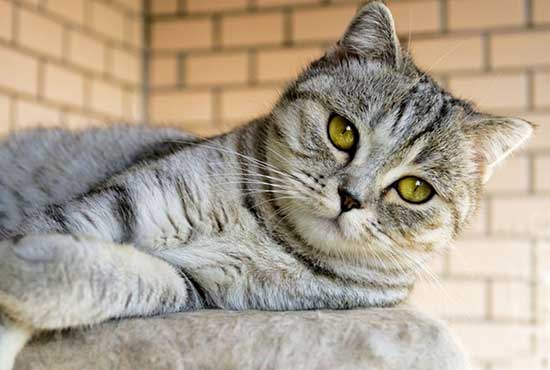
The natural pet food sector has been recognised as a rapidly growing category of pet food. With grain-free products continuing to drive the natural category, it is worth examining the terms "natural" and "grain-free" in relation to our cats' diets.¹ The term "natural" has been defined by the Association of American Feed Control Officials, known as AAFCO, and requires, at minimum, that the pet food be preserved with natural preservatives. And that's it – no further definition. Continued
Figuring Out the Carbs in Canned Cat Food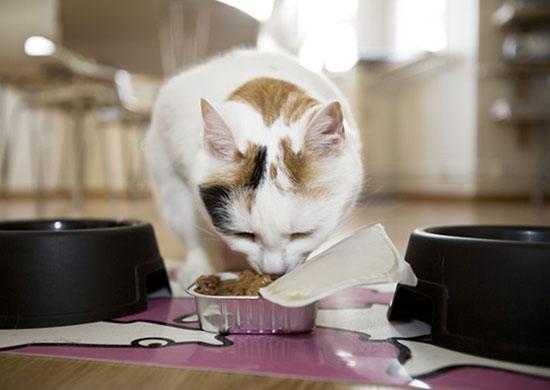
I'm in the process of switching my cats to a raw food diet. I've gotten them off dry food and I'm now giving them a grain-free canned food, but I'm confused about the carbohydrate content. None of the canned foods I look at list carbohydrates on the label. Also, even though the canned food is grain-free there are vegetables in it! Isn't that just carbohydrates in a different form?
Many pet food manufacturers are catching on to the idea that people are avoiding cat foods with grain, so they are using other filler carbohydrates. While grain is especially bad for cats, sweet potatoes and peas aren't much better. Cats and carbs do not mix. Continued
Take Heart, But Not Too Much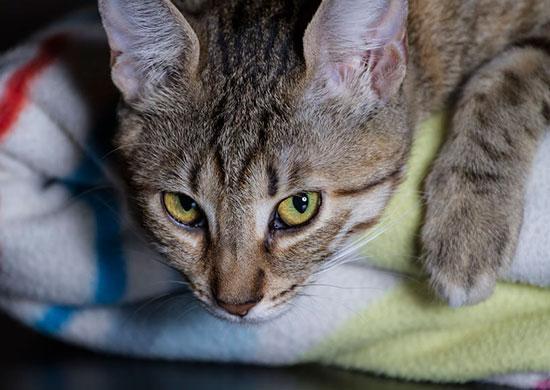
All of my cats have successfully transitioned to raw cat food. I make the recipe from your site and most of my cats were very interested in the raw chicken hearts that go into the mix. I started feeding the hearts whole as treats. How much raw organic chicken heart can I feed my kitties? Five of my six cats can't get enough of them. Can too much organ meat be bad?
While the heart is a vital organ, it is in actuality made up primarily of muscle with a small amount of fat and connective tissue. Even though the heart is referred to as an organ, because it is really a muscle, it is not a secreting organ. Continued
The Case Against Cod Liver Oil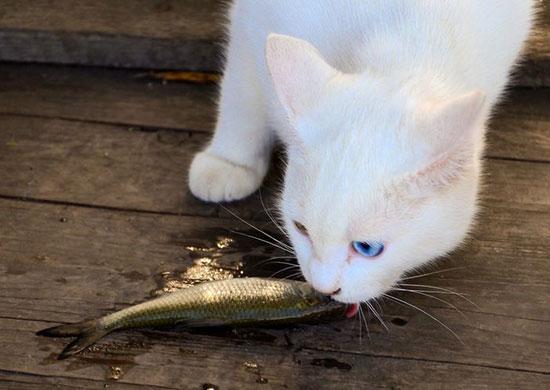
I have a question about the ground raw cat food recipe in"Feline Nutrition's Easy Homemade Cat Food Recipe." You say in it that cod liver oil should not be used. Can I ask why? I've been using salmon oil and I'm just curious why cod liver oil shouldn't be used.
Coco has been scratching excessively since starting on raw food for cats. Considering all the foods she ate previously had no fish and knowing that fish can be an allergen in cats, the fish oil in the raw recipe I'm using will be the next likely suspect I investigate. If she is allergic to fish, are the fish oil capsules a problem? Continued
Feeding Kitten Food to an Adult Cat
My two year old ragdoll recently started to lose weight. The vet did tests and everything came back okay, so they told me to feed her kitten food. She prefers wet food but occasionally eats dry food. I've been told it's not safe to feed an adult cat kitten food, but she seems to be doing ok on this. I would appreciate some advice.
While kitten food tends to be higher in calories, protein and fat, there is no actual danger in feeding this food to adult cats. In fact, during pregnancy and nursing, it is advised to feed the higher calorie, higher fat food to expectant and nursing mothers. Continued
Raw Cat Food vs. More Fiber
My cat has been having really loose stools lately. Sometimes she goes 4 or 5 times a day, too. Her checkup at the vet didn't show anything unusual. She is eating dry food and some canned food. I was told she needed more fiber, and somebody suggested pumpkin, but then I read that cat food with no veggies would help. These seem to be opposites! I am so confused!
Chronic diarrhea is a common problem in cats. In my experience, it often improves with the removal of highly-processed foods and all grain products. Continued
Probiotics, Digestive Enzymes and Raw Cat Food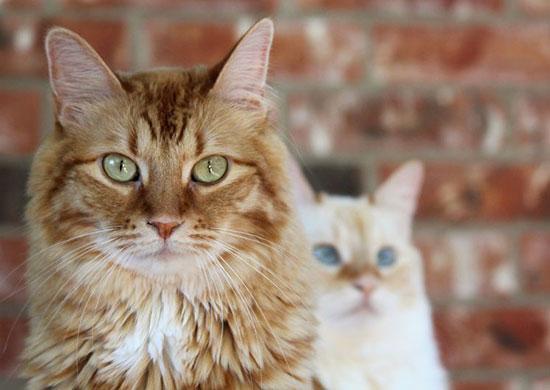
I've heard it is recommended to add probiotics and digestive enzymes to cat food, especially when first transitioning from dry to raw food. Should I add these to the food when I mix up a batch or add them only when feeding each meal? I don't know if these two products are sensitive to storage and freezing.
I cannot answer this question without first addressing a deeper one: whether the addition of probiotics and digestive enzymes will actually aid in the transition to a new food. I find this recommendation on numerous websites, but what I don't find is any scientific support for it, or against it. Continued
Raw Cat Food and Kibble Don't Mix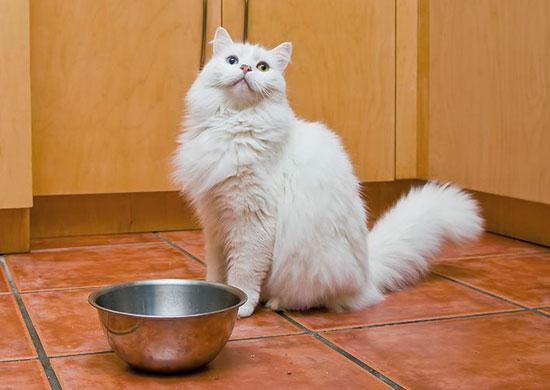
I have been told that it's not a good idea to feed dry food at the same time as raw food, and that it's even bad to feed some kinds of canned foods in the same meal as raw foods. Why is this? Will a meal that has both processed, cooked foods and raw meats make my cat ill? What is it in some processed food that causes problems when eaten with raw foods?
As a raw feeding vet I am often asked how a raw diet can make such a difference to our cats' health. Continued
Feline Nutrition: Who Bears the Responsibility?
At this point in my investigative journey to decide what to feed my cats, the commercial, processed pet-food products were definitely not coming up roses — or even catnip. But let me state for the record that I don't think the manufacturers are purposely trying to harm our cats. I don't think there's a cigar-smoking executive sitting behind his desk (in a corner office with a big window) doing a Snidely Whiplash impression while chanting: "I'm going to hurt some kitties today," followed by evil laughter, of course. No, it's not that personal — it's just business. Continued
Pet Food and Feeding: Personal Ruminations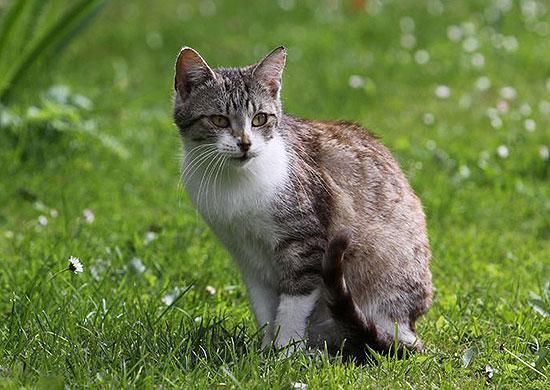
The big, multinational pet food manufacturers — a subsidiary of our non sustainable and increasingly toxic agribusiness industry — and still far too many veterinarians, tell people not to feed their pets human food. "Dog food is for dogs, cat food for cats — all scientifically formulated and properly balanced for health and maintenance" is the constant refrain. What goes into manufactured pet foods of the kind that concerns us here are ingredients that food scientists and engineers have put together from the byproducts of the human food and beverage industries and fast food restaurants that recycle used cooking oil and baked goods into pet food. Continued
Reading a Pet Food Ingredient Label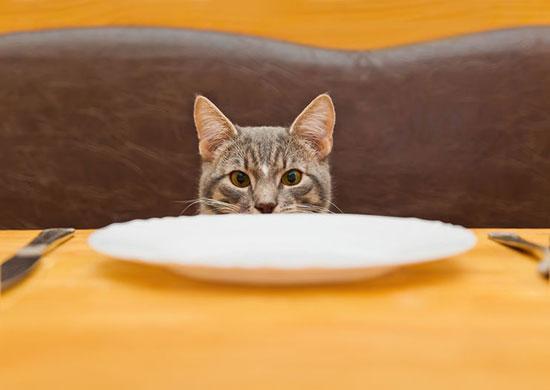
This is where it gets tough. The current labeling system for pet foods is seriously lacking in usable information. The "guaranteed analysis" numbers that you find on a can of food simply gives a wide range of the levels of water, protein, fat, etc. that are contained in the food. You can get a roughidea of what is in the food but, ideally, it should be mandatory to put the more accurate "as fed" values on the can. However, I do not see this happening anytime soon. This would be more along the lines of the information that we find on our own packaged foods. Continued




